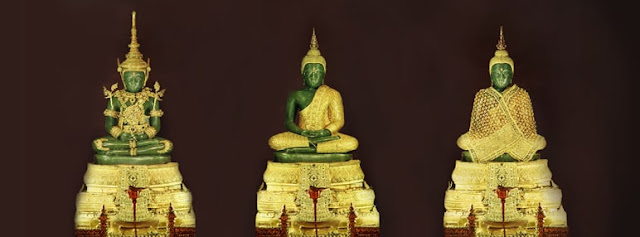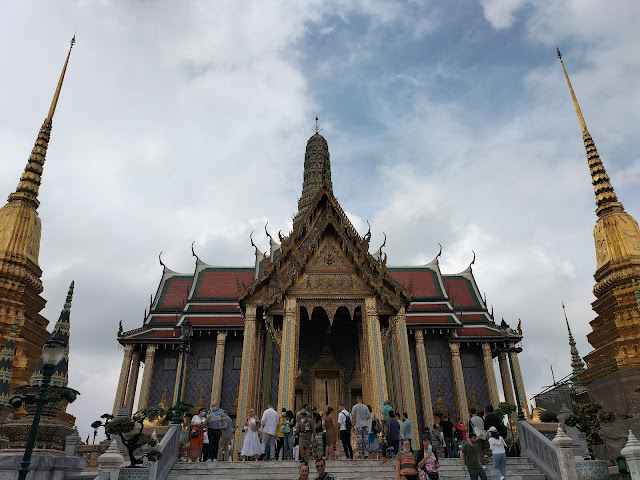A Tale of Two Buddhas: Bangkok, Thailand
In late November I spent a day in Bangkok, transiting between Dhaka, Bangladesh, and Sydney. Bangkok is a city of many temples, and I spent much of my day exploring the temples and sights around the city. Here are two temples with iconic Buddhas in Bangkok.
Temple of the Emerald Buddha, The Grand Palace
On the east bank of the Chao Phraya River, running north to south through the city, is the Grand Palace. This is one of the most famous tourist destinations in Bangkok, consisting of a complex of many buildings built from 1782 onwards and serving as the royal palace and residence of the King of Thailand and once the administrative centre of the city.
The Temple of the Emerald Buddha is located in the heart of the Grand Palace complex, and is named for the meditating figure of Buddha made of green jasper stone (referred to as emerald for its colour) that occupies the central position in the Wat Phra Kaew temple. The Buddha wears clothing of gold and is sacred in Thailand as the most important image of the Buddha.
Photographs are not allowed inside the temple, and the below photo taken from outside shows the Buddha on top of a tall gold podium in the shrine at the front of the temple.
The Emerald Buddha is thought to date from the 15th century and has three sets of gold clothing, for summer, the rainy season, and winter. At the start of each season a clothes changing ceremony takes place, led by the King. The three outfits can be seen below.
 |
| Emerald Buddha in seasonal outfits (Royal Grand Palace Thailand) |
The architecture of the temple and the rest of the Grand Palace complex is very rich and ornate, with gold, sparkling tiles and intricate mosaics and paintings throughout. The complex also houses a museum showcasing the diversity of Thai textiles from throughout the country, named the Queen Sirkit Museum of Textiles after its patron.
Wat Pho (Temple of the Reclining Buddha)
Another famous Buddha is found in the Wat Pho temple complex, just south of the Grand Palace. This complex is dotted with pointed structures covered with mosaics in various colours, as seen below. As one of Bangkok's oldest temples, it dates from the 16th century, and has many rock gardens and images of Buddha throughout the complex.
The Wat Pho complex was also intended as a place of education in medicine, religion, science and literature, and murals and sculptures throughout provide information for students to learn these disciplines. More recently erected signs provide additional information for tourists, including on the traditional Thai massage technique for which there is a dedicated museum located here.
In Summary
These two temple complexes and contrasting Buddhas, one small and one enormous, were a fascinating introduction to the culture of Thailand and made for a wonderful stopover while travelling. Other highlights of this very short trip in Bangkok were the food: street Pad Thai, coconut ice cream and mango sticky rice!






The National Flag of Thailand was officially taken on September 28, 1917. In the nearby Thai language, the flag is known as Strap Trairong, which means the Tricolour flag. The National Flag of Thailand highlights five level groups of red (top), white, blue (twofold width), white, and red. The red tone represents the country and the blood of life. The white tone addresses the religion of Buddhism and the virtue of Buddhist confidence. The blue variety represents the government.
ReplyDeleteThanks for your comment!
Delete